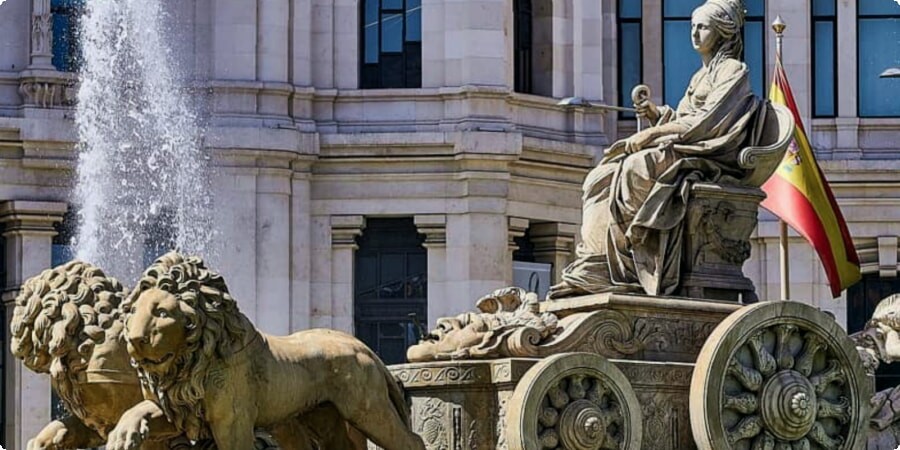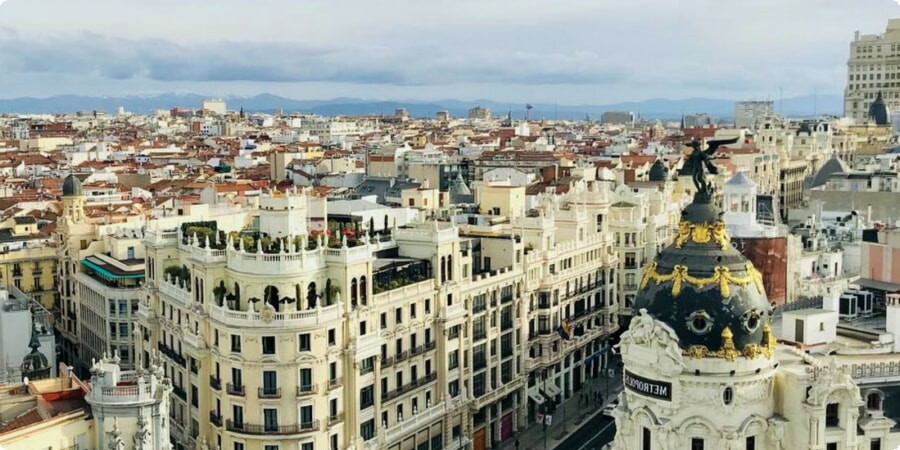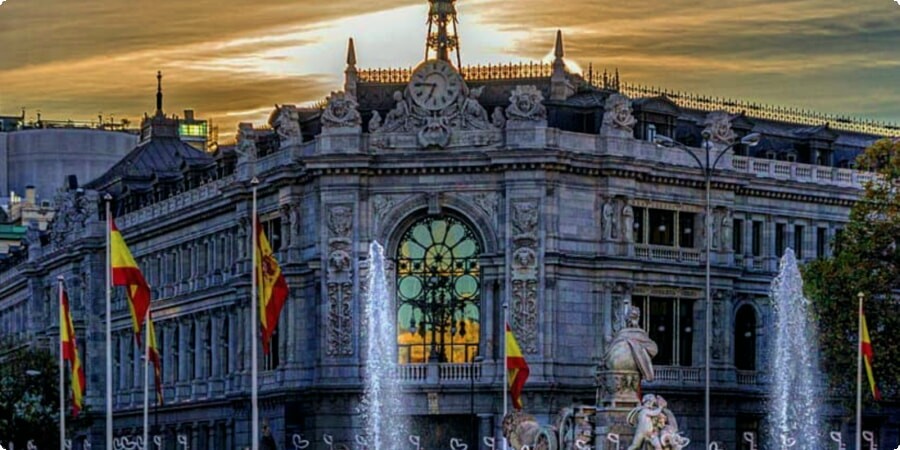Madrid's Gem: Cibeles Fountain and Its Cultural Significance
In the heart of Madrid, where history and modernity intertwine, stands a timeless icon that embodies the city's cultural soul – Cibeles Fountain. Nestled at the intersection of elegance and tradition, this fountain is more than just a water feature; it's a symbol, a meeting point, and a witness to the rhythm of Madrid's heartbeat. Join us on a journey to explore the cultural tapestry woven around Cibeles Fountain, where every droplet tells a story.
Historical Background
To understand the allure of Cibeles Fountain, we must travel back in time. Conceived in the late 18th century and completed in 1782, the fountain has witnessed centuries of Madrid's evolution. Its creation was part of a grand urban development plan, reflecting the Enlightenment ideals that swept through Europe.
The fountain's location was not arbitrary; it was strategically placed at the intersection of key boulevards, accentuating its prominence. Designed by architect Ventura Rodríguez, the fountain portrays the goddess Cybele, the Phrygian goddess of nature and fertility. Thus, Cibeles Fountain became not just a monument but a manifestation of Madrid's cultural and historical narrative.
For a deeper dive into the historical background of Cibeles Fountain, visit Wikipedia.

Architectural Splendor
Approaching Cibeles Fountain is like stepping into a sculpted masterpiece. The architectural splendor of the fountain is a testament to the craftsmanship of its time. Ventura Rodríguez's design marries neoclassical elements with Baroque flair, creating a harmonious blend of grandeur and grace.
The focal point is Cybele, a majestic goddess atop a chariot drawn by lions, symbolizing power and abundance. Surrounding her are cascading waters and intricate details that captivate the eye. The materials used, primarily marble and bronze, not only add to the fountain's durability but also enhance its aesthetic appeal.
As you stand before this architectural marvel, you can't help but be immersed in the beauty and grandiosity that defines Cibeles Fountain. To catch a glimpse before your visit, explore Google Maps.
In the upcoming sections, we'll delve into the cultural symbolism of Cibeles Fountain, its representation in art and literature, and its role as a popular landmark and gathering place. Stay tuned for an exploration of Madrid's gem that transcends time and invites us to connect with the city's rich cultural heritage.
For those planning to explore the beauty of Madrid, consider booking a hotel through this link to ensure a comfortable stay in the heart of the vibrant Spanish capital.

Cultural Symbolism
Beyond its architectural splendor, Cibeles Fountain holds a profound cultural significance that resonates with the people of Madrid. Serving as a symbol of the city, the fountain represents Madrid's resilience, strength, and enduring spirit.
Cybele, the goddess atop the fountain, is not merely a decorative figure but a cultural icon embodying Madrid's identity. The imagery of the lion-drawn chariot symbolizes the dynamic energy of the city, while the water flowing beneath reflects the life force that sustains Madrid. Cibeles Fountain is a focal point for celebrations, protests, and cultural events, making it a living symbol that adapts and evolves with the pulse of the city.
Cibeles Fountain in Art and Literature
The allure of Cibeles Fountain transcends its physical presence; it permeates the realms of art and literature. Countless artists and writers have been inspired by the fountain's elegance and the symbolism it carries. From paintings capturing the play of light on its sculpted forms to poems that delve into the mystique of Cybele, Cibeles Fountain has become a muse for creative minds.
The fountain's depiction in art and literature not only immortalizes its beauty but also adds layers of interpretation and emotion. It becomes a subject of fascination and contemplation, inviting individuals to explore their own connections with this cultural gem.

Popular Landmark and Gathering Place
Cibeles Fountain isn't just an architectural marvel; it has ingrained itself into the social fabric of Madrid. It has become a meeting point, a rendezvous spot, and a witness to the daily lives of the city's inhabitants. Whether it's a joyous celebration of a football victory or a peaceful gathering during cultural events, the fountain's surroundings echo with the vibrancy of Madrid's social life.
Surrounded by iconic landmarks such as the Palacio de Cibeles and the Bank of Spain, the fountain forms the centerpiece of a hub where history and modernity coexist. It invites locals and tourists alike to linger, converse, and soak in the atmosphere of this bustling urban oasis.
For those planning to explore Madrid beyond Cibeles Fountain, consider the convenience of a rental car. Booking a car through this link ensures flexibility in discovering the city's gems at your own pace.
Renovations and Conservation
Preserving the timeless beauty of Cibeles Fountain is not a task taken lightly. Over the years, the fountain has undergone meticulous renovations and conservation efforts to ensure its longevity. The challenges of weathering, pollution, and the passage of time necessitate a delicate balance between preservation and adaptation.

Renovation projects focus on maintaining the structural integrity of the fountain, restoring intricate details, and utilizing modern techniques to combat environmental wear. The conservation endeavors serve not only to protect a historical monument but also to honor the cultural legacy it represents. As Cibeles Fountain stands as a symbol of Madrid, these efforts are vital to safeguarding the city's heritage for future generations.
Visitor Experience
For those who venture to Cibeles Fountain, the experience goes beyond admiring an architectural marvel. Practical information enhances the visitor's journey, ensuring a seamless and enriching encounter with this cultural gem. Access points, nearby attractions, and historical context contribute to a holistic understanding of the fountain's significance.
Guided tours provide insights into the history, symbolism, and cultural importance of Cibeles Fountain. Visitors can appreciate the artistic details up close and learn about the events that have unfolded in its presence. The surroundings, including the grand avenues and architectural landmarks, add depth to the visitor's immersion in the heart of Madrid.
Planning Your Journey
As you plan your journey to explore Cibeles Fountain and the treasures of Madrid, consider the convenience of a rental car. Navigating the city becomes a seamless and personalized experience, allowing you to explore not only the iconic landmarks but also the hidden gems that define Madrid's character.
Booking a car through this link provides flexibility, allowing you to curate your itinerary and delve into the city's diverse neighborhoods. From the historic districts to the modern avenues, having a car at your disposal enhances your exploration of Madrid's cultural tapestry.
Prepare for an immersive journey through history, art, and the vibrant life of Madrid as you embark on an adventure centered around Cibeles Fountain. Stay tuned for our concluding reflections on the enduring legacy and cultural significance of this iconic landmark.